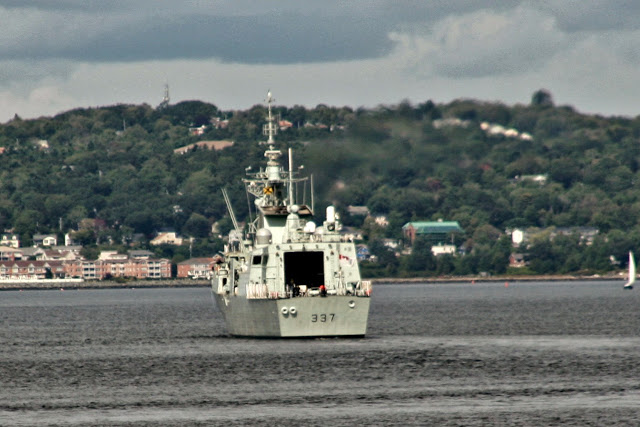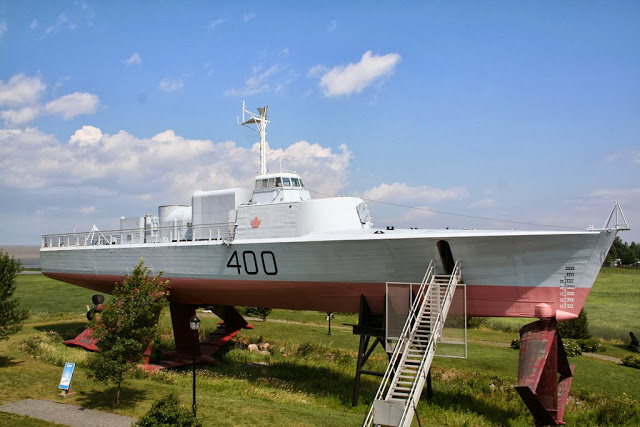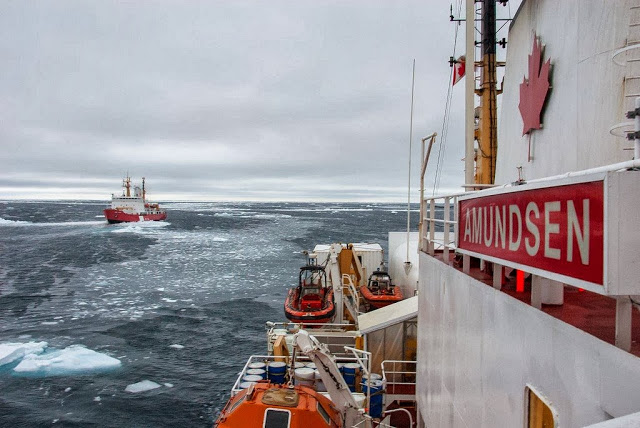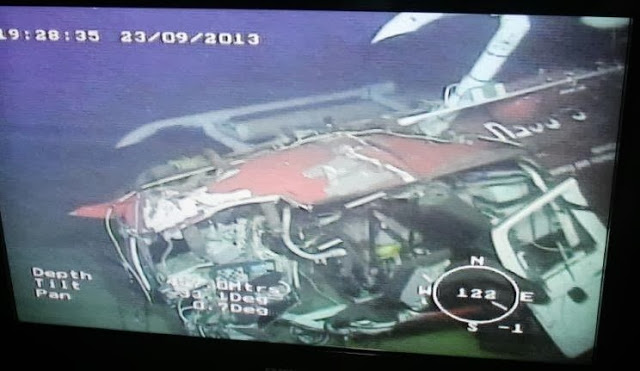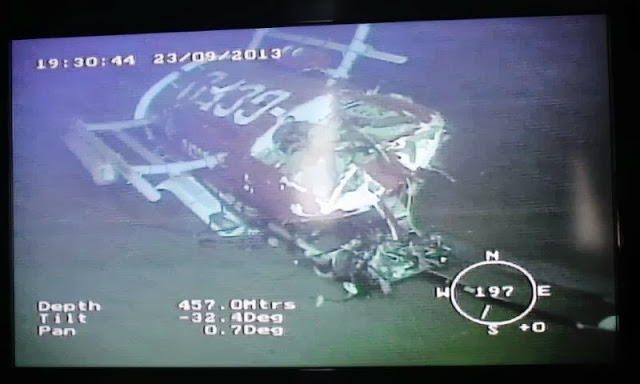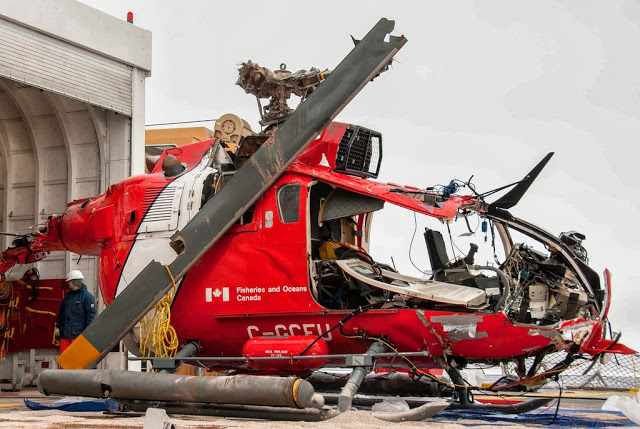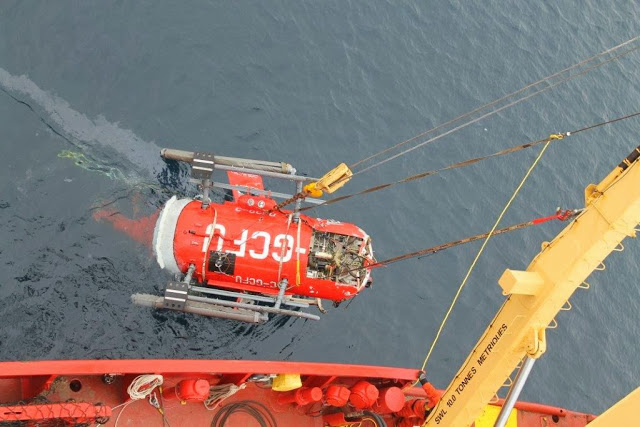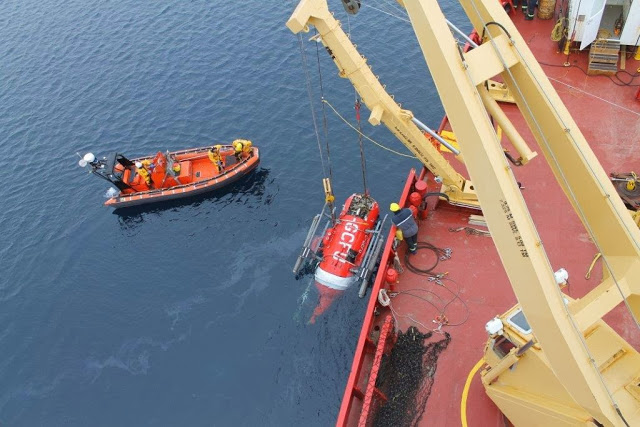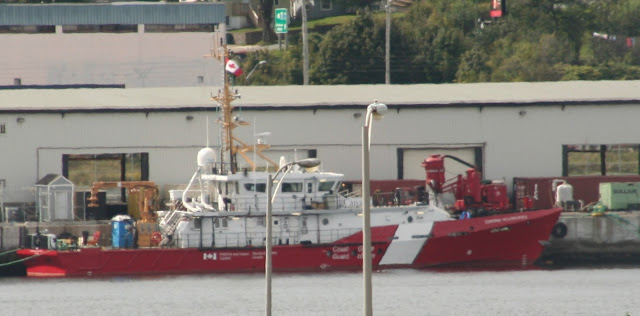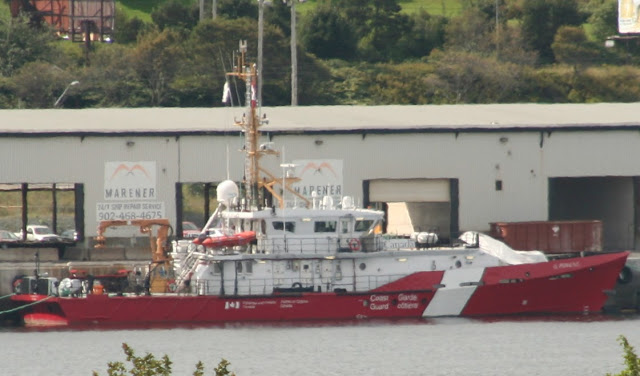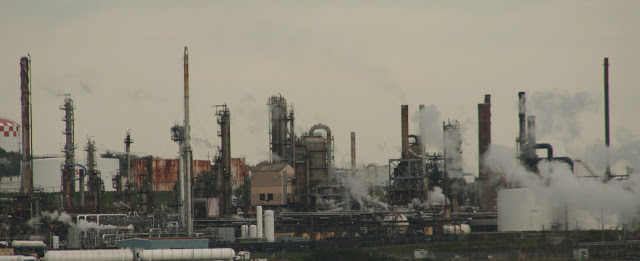HMCS Fredericton has emerged from her FELEX refit and has been out and about on various trials since. In the photo above, she was running laps in the Basin earlier this week
Yearly Archives: 2013
HMCS Bras D’or (FHE 400)
HMCS Bras d’Or (FHE 400) was a hydrofoil that served in the Canadian Forces from 1968 to 1971. During sea trials in 1969, the vessel exceeded 63 knots (117 km/h; 72 mph), making her the fastest warship in the world.
The vessel was built from 1960 to 1967 for the Royal Canadian Navy, as a project for the testing of anti-submarine warfare technology on an ocean-going hydrofoil. Changes in priorities and cost overruns later led to the project’s cancellation. HMCS Bras d’Or (FHE 400) was the second vessel to bear that name (see below) and was built at Marine Industries Limited (MIL) in Sorel, Quebec, the primary contractor being de Havilland Canada, an aircraft company
The ship was saved and donated to the Musée Maritime du Québec at L’Islet-sur-Mer, Quebec. Bellow are photos from my visit in 2006.
For Additional Photos Of her running, See this Link
CCGS Arctic Helicopter Crash Updates
On September 9, 2013, the CCG helicopter, operating from the CCGS Amundsen on an ice reconnaissance mission in the M’Clure Strait north of Banks Island, Northwest Territories, was involved in an accident and sank. None of the three persons on board the helicopter survived.
The TSB investigation team will arrive in Resolute, Nunavut today where they will meet with CCG and ArcticNet personnel to begin the search and recovery efforts aboard two CCG vessels.
The three men who died after a Canadian Coast Guard helicopter crashed in the Arctic Sept. 9 were killed by “cold water immersion,” Cathy Menard, chief coroner of the Northwest Territories, said Sept. 17.
Autopsies conducted in Edmonton Sept. 16 showed the men suffered no fatal injuries, suggesting they survived the crash of their helicopter, only to die from the effects of the frigid water — this would have led to hypothermia, a lethal lowering of their body temperature, likely within about one hour.
Marc Thibault, commanding officer of the CCGS Amundsen, Daniel Dubé, the helicopter pilot, and Klaus Hochheim, a scientist affiliated with the University of Manitoba, all died when the helicopter from the Amundsen crashed while they were conducting a routine ice observation tour.
The three were found in the water wearing survival suits, when the Amundsen arrived on the scene.
But while these suits can assist in surviving cold-shock and swim failure — which can result when a person hits the icy water, how long a person can survive in cold water primarily depends on the water’s temperature, exposure time, and the thermal insulation of the protective clothing.
The helicopter now lies under about 420 metres of sea water. The Canadian Coast Guard (CCG) is working to recover the CCG Messerschmitt-Bolkow-Blohm Bo-105 helicopter The Transportation Safety Board of Canada (TSB) investigation into this accident is ongoing.
The CCGS Henry Larsen is immediately tasked with locating the helicopter and providing icebreaking and technical assistance. The CCGS Amundsen will provide search and recovery assistance, and will transport the technical equipment and personnel required to locate and recover the helicopter.
“While there are logistical challenges in planning a recovery mission in the harsh Arctic at this time of year,” said Marc Grégoire, Commissioner of the CCG, “We will make every reasonable effort to recover the helicopter as soon as possible, while ensuring the safety of all personnel involved in this mission.”
UPDATE 09/24/2013
The sunken Canadian Coast Guard (CCG) helicopter has been located by ArcticNet’s Remote Operated Vehicle (ROV) in the Arctic. A team consisting of the CCG, ArcticNet and the Transportation Safety Board (TSB) is working to recover it.
The ice and weather conditions will continue to present a significant challenge to the recovery operation. While the aim is to recover the helicopter as quickly as possible, ensuring the safety of the personnel and vessels involved in this operations is a first priority.
Images and Text from TSB of Canada
UPDATE 09/26 – Helicopter Sucessfully recovered.
The sunken Canadian Coast Guard helicopter, which crashed on 9 September 2013, has been successfully recovered from the Arctic Ocean.A team consisting of the Canadian Coast Guard’s CCGS Amundsen and CCGS Henry Larsen, ArcticNet and the Transportation Safety Board (TSB) has been working to recover the helicopter since its discovery on Monday afternoon.
Thanks to the technical expertise of the Canadian Coast Guard crew, to ArcticNet, and to the Canadian Scientific Submersible Facility pilots who operated the Amundsen’s remotely-operated vehicle, the wreckage was raised to the surface of the water yesterday where it was safely lifted onto the deck of the Amundsen and then transferred to the Larsen.
While in transit to Resolute, Nunavut, further plans are being made to transport the wreckage to a location where the TSB can conduct its full investigation.The TSB is grateful for the great collaboration of the Canadian Coast Guard and ArcticNet officials during this difficult operation and hope the successful recovery operation may contribute important information to the ongoing investigation.
Recovery photos from TSB.
Cruise ship Departures
Busy Day in Eastern Passage.
Heros at Pier 9
Earl Grey Hits Dock
Harmony N for ACL
Imperial Oil Shutdown
Halifax, Can you help Cpl. McLaren’s Family?
Update: You DID! The McLaren Family had front row seats for the launch. More details to follow.
I have been contacted this afternoon by Canadian Heroes, who are attempting to enable the family of Corporal McLaren M.M.V to Come to Halifax (from Peterbrough) to view the launch of the Hero Class Patrol vessel named after him. The issue currently is getting them a better viewing spot then the wall on Barington street, or Dartmouth Shore.
The CCGS Corporal McLaren M.M.V is named after Corporal Mark Robert McLaren, M.M.V., of Peterborough, Ontario. Corporal McLaren was killed on December 5, 2008 by an IED strike along with WO Mark Wilson and Pte Demetrios Diplaros, in Kandahar Province, Afghanistan. He was awarded the MMV posthumously for an action that took place a month earlier on November 6. When his Canadian-Afghan patrol was ambushed. During the attack, Corporal McLaren crawled through enemy fire to aid his team’s seriously injured interpreter. He was awarded the Medal of Military Valour.
If you can Help, Please contact Chris @ Canadian Heroes via
Email: info@canadianheroes.com
Phone: 1-800-465-7378

